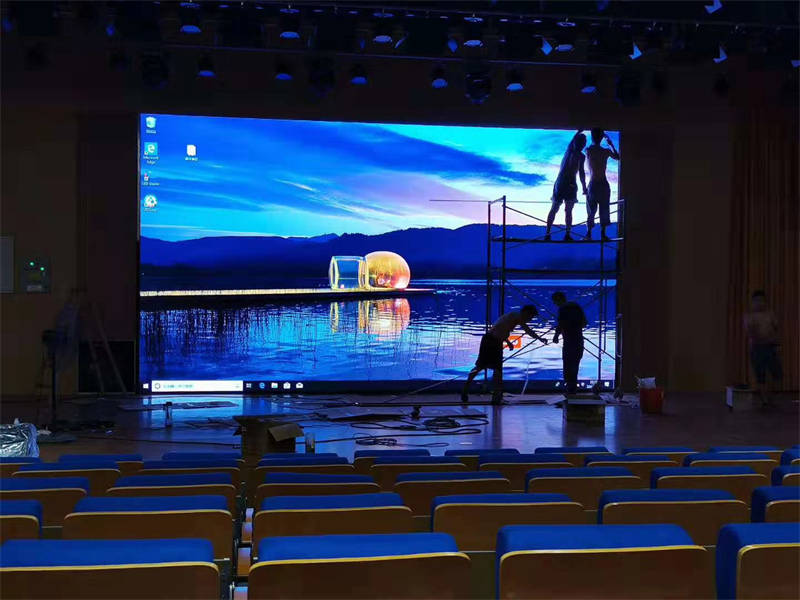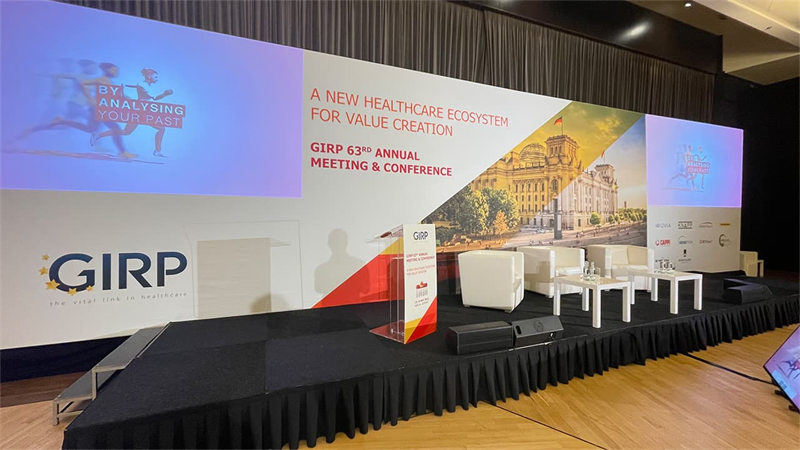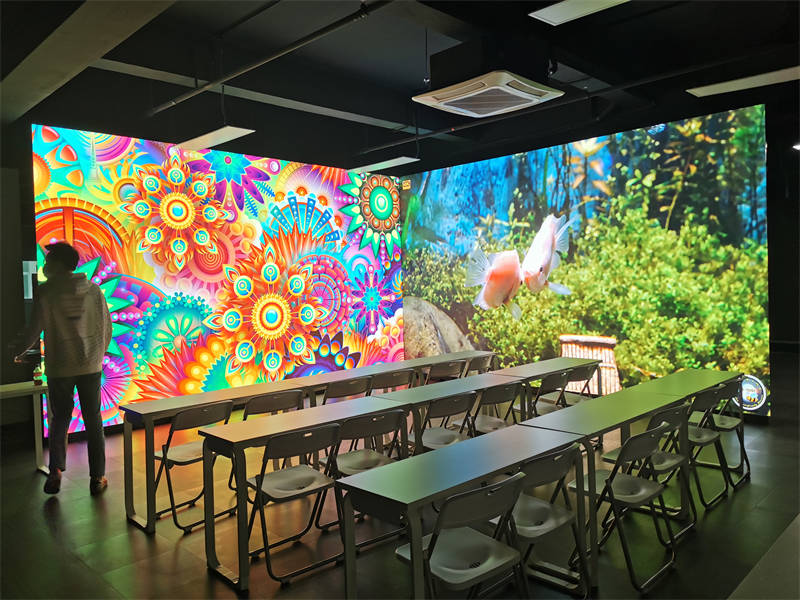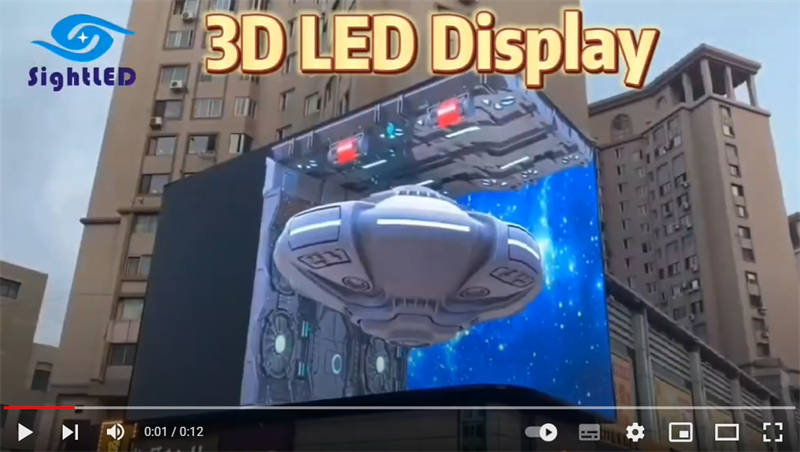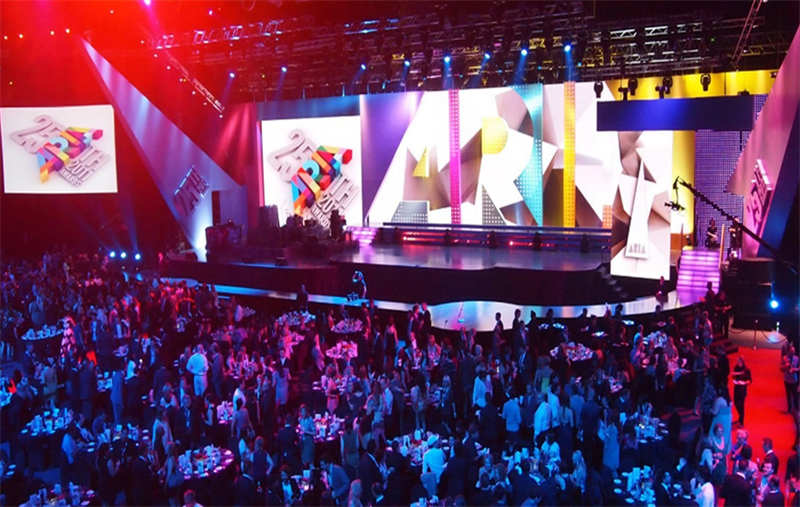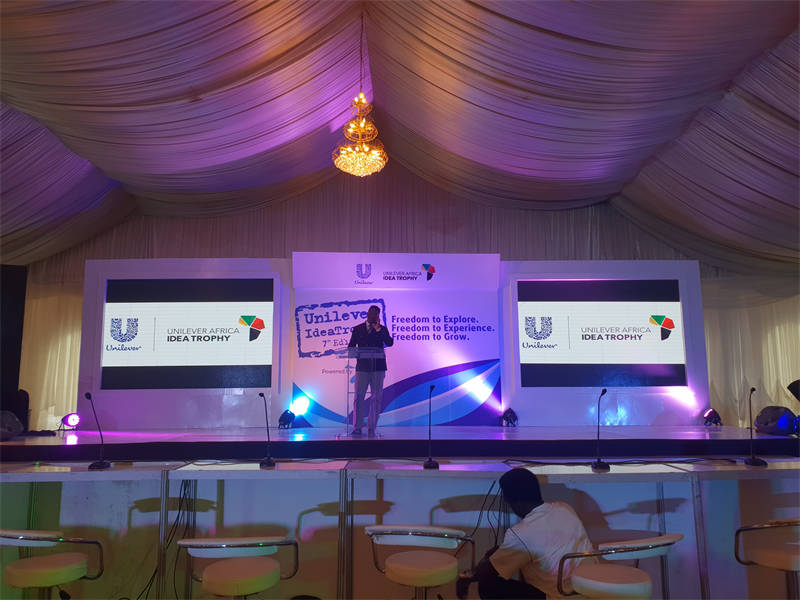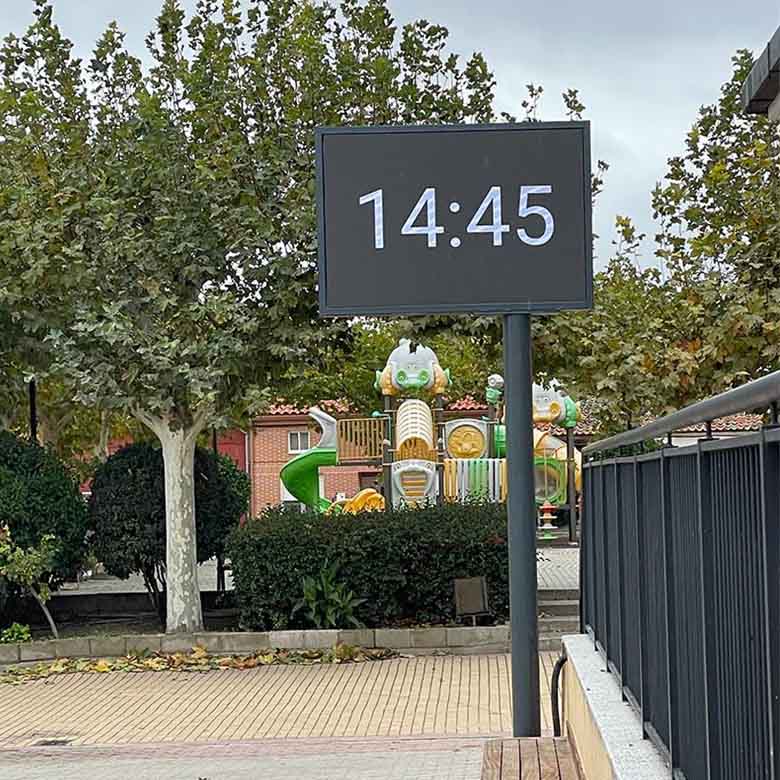With the advent of the LED era, China has become the world’s largest manufacturing and production base for the LED industry. This has provided unique advantages for the rapid development of the domestic LED industry. Small-pitch LED displays have seemed to have been hacked since their birth. The youthfulness of the past has faded away. Domestic small-pitch LED display products have been launched in large numbers, and the market continues to heat up. In which markets are small-pitch LED displays mainly used? What are their advantages? How to choose?

Table of Contents
ToggleAdvantages of small pixel pitch LED display:
As we all know, small-pitch LED displays are indoor LED displays with a pixel pitch of P2.5 and below. Small-pitch LED displays are becoming increasingly mature in application industries such as indoor high-end command and control centers, dispatch centers, and monitoring centers.
Eliminate visual seams and enjoy a large, complete display.
Pure black and pure white background, the display color is beautiful and the picture has clear layers.
Unique black ink color processing technology and high-definition correction system make the picture bright and even

With its seamless seams, excellent color performance, low energy consumption and other characteristics, small-pitch LED displays can meet the requirements of command and dispatch centers, command and control centers, radio and television studios, and meteorological information centers that have high image quality requirements. and other high-end indoor application fields.

Compared with the DLP rear-projection splicing large screens that currently dominate the fields of security monitoring, command and dispatch, and the rapidly growing LCD splicing screens, the significant advantage of small-pitch LED displays is seamless splicing, and theoretically the size can be infinitely expanded. And the installation methods are flexible and diverse. The screen body is thin, space-saving, and high-brightness, which can meet the needs of semi-outdoor environment. In addition, there is no high cost of replacing light bulbs, low energy consumption, and low later operation and maintenance costs.
The improvement in picture detail makes indoor applications of LED displays possible. With the continuous improvement of display technology, LED TVs based on small-pitch LED display technology have also emerged.
Brightness: 100-800cd/m, can automatically adjust the brightness according to changes in surrounding light and darkness
Small-pitch LED displays are the new “darling” of the security industry. In addition to smart locks and drones, there are more places in the security field where small-pitch LED displays can take root.
Using RGB three-primary color imaging technology, it reaches broadcast-level standards; through single-point brightness and chromaticity correction, the brightness and chromaticity of the screen are highly consistent; the color temperature can be adjusted in the range of 2500-10000k
For example: traffic guidance systems, public security management, smart cities, monitoring center command rooms, etc. all require display screens as information broadcast platforms. With the popularization of the 4K concept and the implementation of standards such as H.265, video surveillance is continuously developing towards high definition, and the requirements for LED displays are getting higher and higher, striving to ensure that every detail of the video content is displayed. Therefore, high-definition, high-quality, low-energy consumption small-pitch seamless splicing LED screens have become the “darling” of the security industry.
Comparison between small-pitch LED display and traditional display:
After long-term use of DLP and LCD, the attenuation of the light source will lead to uneven brightness and chromaticity among each display unit.

Adopting nanosecond-level display technology, the frame changing time of the LED display is shortened to an extremely short time, and the tailing and ghosting superposition phenomena that occur when liquid crystals and projections process fast dynamic images are eliminated.

Original wide viewing angle technology, 160°~170° left, right, up and down viewing area, no blind spots, no color cast, the image is always perfect and seamless, and the display coverage area is larger.

LED screen
(The wide viewing angle picture is complete and has no color cast)
Traditional DLP, LCD
(Small viewing angle, picture distortion and color cast)
Independently developed high-end broadcast control system, supports ultra-high refresh rate output, and drives decoding to respond quickly; the captured image is stable without ripples and flickering, and can cope with dynamic display images, with clear image edges and good dynamic expression;

It has its own mold processing equipment and production workshop to ensure that each display unit box is processed with high-standard mold-level processing;

Both high-brightness and low-brightness have high grayscale expressiveness, solving the technical problem of loss of grayscale in brightness adjustment in the industry;

Small spacing LED screen
(Dark levels are clear)
traditional screen
(The level of dark parts is unclear)
When choosing a small-pitch LED display, consider the following aspects:
- Price
Due to the need to install more LED lamp beads per unit area, small-pitch LED displays have higher process requirements, and it also costs more to solve problems such as heat dissipation and circuitry than large-pitch products. The yield rate is low, resulting in At present, the price of small-pitch LED products is still high, but as the production capacity of small-pitch LED displays increases and technology improves, the yield rate will be further improved and product prices will continue to fall. - Space
Even for products with small spacing such as P1.5, to achieve full HD resolution (1920×1080), the screen size will reach 144 inches, which is a huge demand for space. The length and width specifications excluding the base are about Measuring 3.2 meters by 1.8 meters, it is not easy to find a wall that can put it down. This is without considering the complicated installation work of this big thing. - The last important issue is maintenance
Although LED lamp beads have a lifespan of up to 100,000 hours, due to their extremely high density and low thickness requirements for indoor products, heat dissipation is difficult and local failures are prone to occur. In this way, it will be very difficult to maintain and repair a small-pitch screen with a large area.
The main structure is made of high-performance thermally conductive aluminum, and the internal circuit has a specially optimized layout. The interior of the box adopts a large-area heat dissipation design, which can quickly take away the heat inside the box, making the entire screen temperature rise lower and the operation more stable;

When selecting and using small-pitch LED displays, you should pay attention to the following aspects:
- Color temperature can be adjusted
Color temperature (ColorTemperature) is the temperature determined by comparing the shape of the emitter’s emission spectrum with the shape of the best-fitting blackbody emission spectrum. When a studio uses an LED display as the background, its color temperature should be consistent with the color temperature of the lights in the studio to obtain accurate color reproduction during shooting. According to the needs of the program, the lighting in the studio sometimes uses 3200K low color temperature lamps, and sometimes uses 5600K high color temperature lamps. The LED display screen needs to be adjusted to the corresponding color temperature to obtain satisfactory shooting effects. - The filling factor should be high
The fill factor (FillFactor) of the LED display is also called the bright area ratio, which is the ratio of the light-emitting area of each pixel to the physical surface area occupied by the pixel. The LED display screen is composed of discrete pixels. There are obvious non-luminous black areas between the pixels. When viewed at a close distance, the picture will be incoherent and incomplete, and the uneven brightness will produce a grainy feeling. If the light source is limited to a small Within the pixel surface area, causing the brightness of a single pixel to be several times or even ten times the brightness of the entire screen, it will cause a serious glare. The TCO99 standard recognized by the flat panel display industry stipulates that the fill factor should not be less than 50%. Many LEDs currently on the market
The fill factor of the display screen does not reach this indicator, and the cut-off characteristics of the TV’s low-pass filter also directly affect the appropriate shooting distance of LED displays with different fill factors.

- LEDs with the same point spacing
A display with a small fill factor will attenuate more than one with a large fill factor, so the shooting distance needs to be increased. If the system low-pass filter passband is 4MHz and the high-frequency attenuation characteristic is 12db/octave, then the shooting distance with a fill factor of 25% will have 1.15db more attenuation than a fill factor of 50%, and the shooting distance needs to be increased by about 10%. . The increase in fill factor makes the viewing angle of the display wider and the color mixing effect more ideal. It overcomes the problem of dazzling pixels and creates conditions for appropriately increasing the brightness of the entire screen to achieve better effects. Jiangsu Education Station selected an LED display with a fill factor of 60%. It has moderate and soft brightness, uniform and bright colors, and clear and delicate expression, ensuring the high quality of the display. - Ensure a good usage environment
Only under suitable working conditions during the service life of the product will the failure rate be low. As an integrated electronic product, LED display screen is mainly composed of control board equipped with electronic components, switching power supply, light-emitting devices, etc. The lifespan and stability of all these components are closely related to the operating temperature. If the actual operating temperature exceeds the specified use range of the product, not only will its lifespan be shortened, but the product itself will also be seriously damaged. In addition, the threat of dust cannot be ignored. When working in a dusty environment, the PCB absorbs dust, and the dust deposition will affect the heat dissipation of electronic components, causing the temperature of the components to rise, which will lead to a decrease in thermal stability and even leakage. In severe cases, it will cause burnout. Dust will also absorb moisture, thereby corroding electronic circuits and causing some short circuit problems that are difficult to troubleshoot. It is necessary to protect the LED display in advance.
Summarize:
Small-pitch LED display technology is constantly developing, and small-pitch display technology is becoming more and more mature. The maturity of small-pitch technology has led to a continuous decline in production costs. By then, I believe that the price of small-pitch LED displays will become more and more affordable, and it will be available to thousands of households just around the corner!

